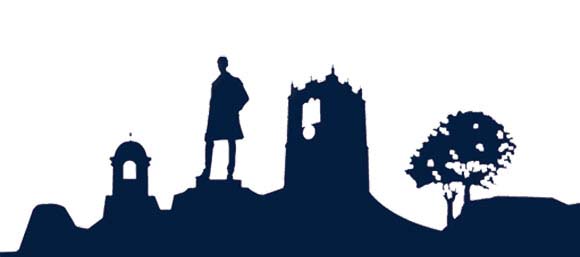The 19th Century author, C.H Leslie summed up Mold’s appeal when he wrote: ‘Many strangers visit the place – not all bent on trade – but some merely as tourists.’
Mold has a wealth of history and culture from the stunning parish church of St. Mary’s said to be one of the finest ecclesiastical buildings in Wales, to Plas y Dre, the winter residence of the Nercwys Hall family, and the fine Georgian gothic structure of the former Pendref Chapel.
At the top of the town is Bailey Hill a firm reminder of the Town’s ancient past and its establishment in Norman times. Named after the medieval Motte & Bailey castle that once stood proudly in the middle of this traditional market town, Bailey Hill is a lovely public park with lots of different areas to explore, enjoy the breathtaking views, soak up the serene space and gaze at the Gorsedd Circle. It’s the perfect place to spend time with friends and family.
It would be hard not to walk around Mold without coming across reminders of its most famous son, Daniel Owen considered to the ‘Welsh Charles Dickens’. The Daniel Owen statue stands in the Daniel Owen square and its inscribed words ‘Not for the wise and learned have I written, but for the common people’ this sums up the authors philosophy. Daniel Owen also lends his name to a week long festival.
The Gold Cape of Mold was unearthed by workers quarrying for stone just off Chester Road. The Cape which dates from between 1900 and 1600 BC and made from 23-carat gold and is believed to have been a garment for religious ceremonies has been restored to its former glory and now resides in the British Museum. A fantastic replica is displayed in the Mold Museum within the library.
Mold’s Street Market was established after the town was founded in around 1100 by Britain’s Norman conquerors, who drew up the layout of the High Street wide enough to accommodate market traders and beast sales. Extending from the Cross to Bailey Hill, the stalls initially fronted the shops of merchants and tradesmen. Later a ‘beast market’ arrived in Grosvenor Street. A 1653 survey for the then Lord of the Manor, Earl of Derby, includes details of two fairs which would have been held in the High Street. While the annual fairs are no longer held, the tradition of the twice-weekly street market continues to this day.











